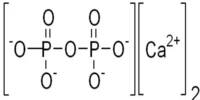Bismuth germanium oxide or bismuth germanate is an inorganic chemical compound of bismuth, germanium and oxygen. It is a compound with interesting properties, primarily used in the field of radiation detection. Most commonly the term refers to the compound with chemical formula Bi4Ge3O12 (BGO), with the cubic evlitine crystal structure, used as a scintillator. (The term may also refer to a different compound with formula Bi12GeO20, an electro-optical material with sillenite structure, and Bi2Ge3O9.)
Crystal Structure
BGO is a crystalline material known for its high density and high atomic number, which makes it particularly effective at stopping and detecting gamma rays and other high-energy photons. It typically crystallizes in a tetragonal or orthorhombic structure, depending on the specific formulation and synthesis conditions. The crystal structure affects its electrical and optical properties.
Properties
It has a relatively high density of about 7.13 g/cm³, which contributes to its effective radiation shielding and detection capabilities. The material is typically used in the form of large crystals.
- Dielectric Properties: It has high dielectric constants, making it useful in capacitors and other electronic components. Its dielectric constant can be significantly higher than that of traditional materials.
- Optical Properties: This oxide exhibits interesting optical characteristics, including transparency in the visible to near-infrared spectrum. This makes it useful for various optical applications, such as lenses and optical coatings.
- Ferroelectricity: It is known to exhibit ferroelectric properties, meaning it has a spontaneous electric polarization that can be reversed by an external electric field. This property is useful in memory devices and sensors.
- High Ionic Conductivity: It shows high ionic conductivity at elevated temperatures, which makes it suitable for use in solid oxide fuel cells and oxygen sensors.
- Stability: It is relatively stable under various environmental conditions, which contributes to its utility in different technological applications.
Applications
Radiation Detection: Due to its scintillation properties, BGO is commonly used in scintillation detectors. When high-energy photons interact with BGO, it emits visible light (scintillation) which can then be detected and measured by photomultiplier tubes or other light sensors.
Advantages
BGO’s high density and high atomic number make it very efficient for detecting gamma rays. It has good energy resolution and is relatively insensitive to thermal neutrons, making it useful in a variety of radiation detection applications, including medical imaging (such as PET scans) and in high-energy physics experiments.
Drawbacks
While BGO is effective, it is not without its downsides. For instance, it has relatively slow scintillation decay times compared to other materials, which can limit its performance in fast timing applications.
















